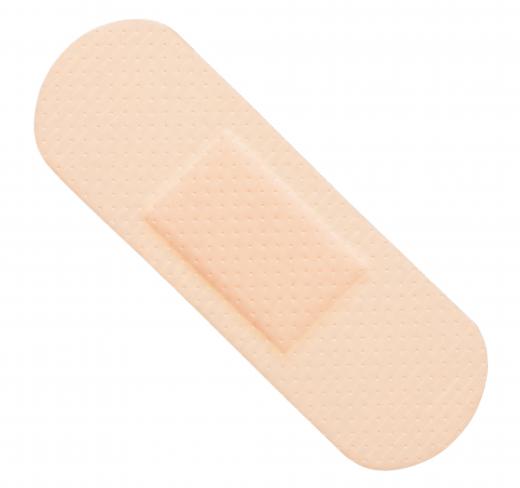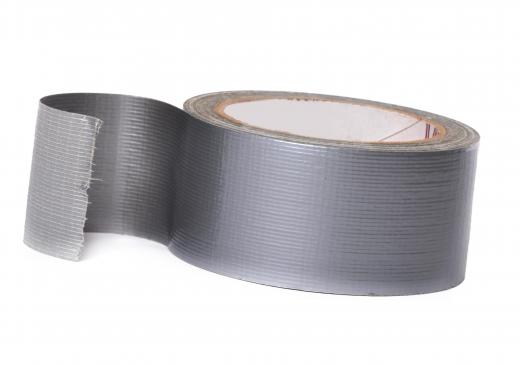An adhesive backing is any kind of thin material that is coated with an adhesive in order to make tape and tape-like objects. Its primary purpose is to give the adhesive a form so that it is easy to apply and to provide strength to the bond. Different types of tape use different kinds of adhesive backing to fit specific purposes.
One of the most common types of adhesive backing is the thin plastic film used to make transparent office tape and packing tape. This film is lightweight, reasonably resistant to tearing and — most importantly — very inexpensive to produce. Its low price makes it suitable for situations that require either many small pieces of tape or large areas of coverage.

Paper is another popular adhesive backing. It is used in masking tape and many water-activated gummed adhesive tapes because it can be written on and is easy to tear. The fiber structure of paper adhesive backings often make these products adhere well to small, detailed objects that might not stick well to adhesives backed with film.
Another type of backing that sees frequent use is fabric. Used in cases where strength is the primary determining factor, fabric adhesive backing is generally very tough because of its woven nature. It is also one of the more flexible backings and is frequently used in cases where its ability to stretch slightly is helpful. Some examples of fabric backing include gaffer’s tape and surgical tape.

Many types of plastic other than transparent film are also used as adhesive backings. Electrical tape is usually made with a vinyl backing so that it doesn’t conduct electricity and can be easily molded around connections. Adhesive bandages, also known as sticking plasters, are often made with any of a number of plastic or foam backings designed to emulate and move with human skin. Other features of plastic adhesive backings include their durability and the fact that they usually are water-resistant.
Metal foil is sometimes used as an adhesive backing when the situation calls for a tape that is durable and holds its own shape. In some cases, metal foils might also be utilized for their conductive properties — the opposite of electrical tape. Another common usage of foil as an adhesive backing is when an irregularly shaped object needs to be made reflective.
In some cases, multiple types of backings might be combined to make use of their different qualities. For example, duct tape has a fabric adhesive backing that is then coated with plastic to make it stronger and more water-resistant. Loose-weave fabric or fiberglass filaments might also be combined with transparent film to make durable, difficult-to-tear strapping tape.
